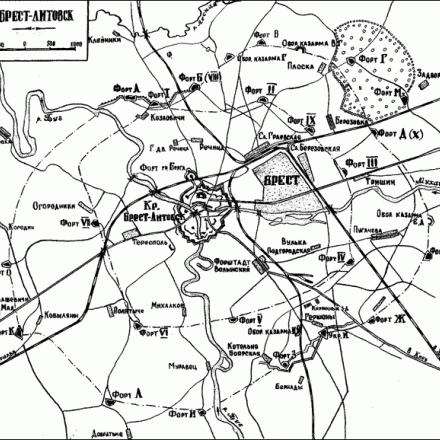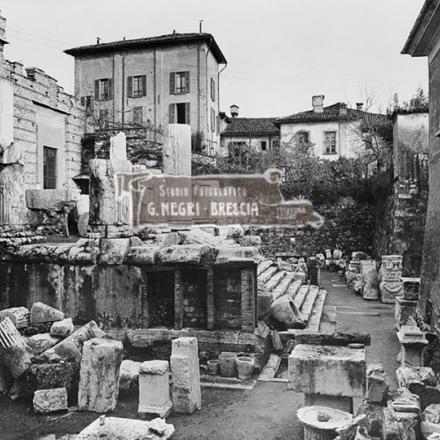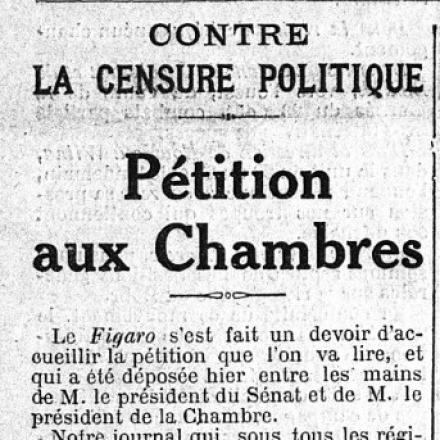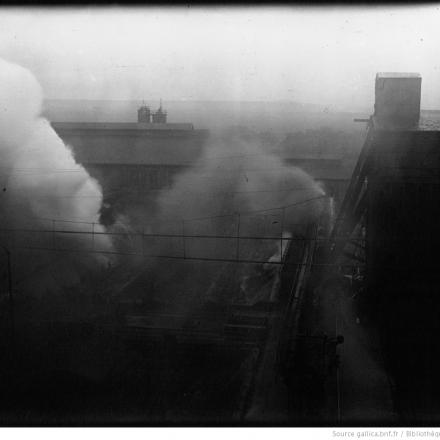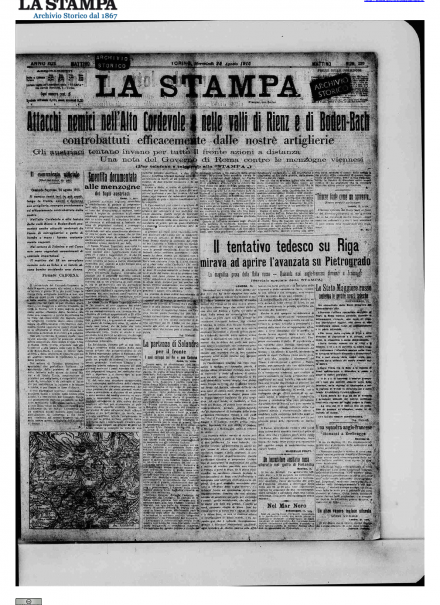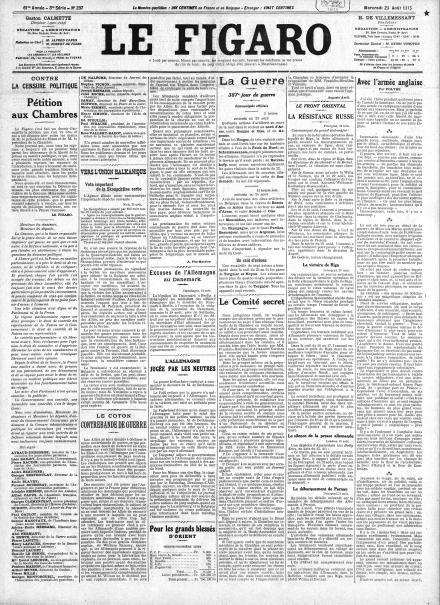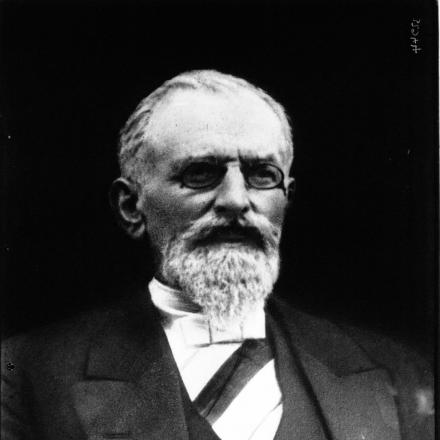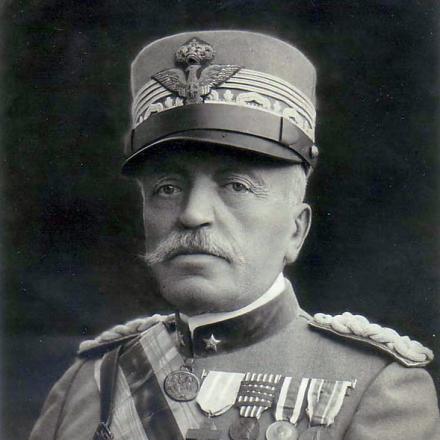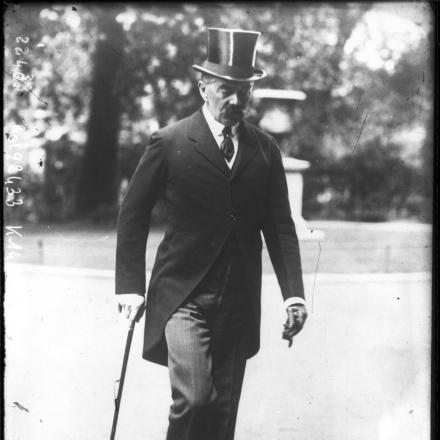Tocca a Brest-Litovsk
Gli austro-tedeschi sono arrivati: il 25 agosto inizia l’assalto alla fortezza di Brest-Litovsk. Nonostante la disperata resistenza russa, le armate del Kaiser continuano l’avanzata da Kaunas, dal Narew e dal Bug superiore. Pietrogrado può farci poco: l’approvvigionamento di armi e munizioni resta insufficiente, servirebbe una mano dagli Alleati, ma non c’è una via di comunicazione diretta. Se solo i Dardanelli fossero aperti…
I britannici stringono comunque la morsa attorno all’Impero ottomano: la flotta del Mediterraneo blocca le coste dell’Asia minore.
Lungo il fronte occidentale gli Alleati lanciano assalti nella Woëvre e nelle Argonne, mentre più a nord si riorganizzano, in previsione delle manovre autunnali: il corpo di spedizione britannico estende la propria linea, occupando parte delle vecchie postazioni francesi.
L’Italia piange il bombardamento di Brescia: il bilancio è di 6 morti e 20 feriti, tutti civili.
Davide Sartori
GLI AVVENIMENTI
Politica e società
- Viene reso noto l’orribile massacro armeno.
- Pubblicato il resoconto delle operazioni militari a Gallipoli fino al 6 Agosto.
- La costa dell’Asia Minore e la Siria vengono dichiarate in stato di blocco.
- Le Figaro pubblica la petizione al Parlamento presentata il giorno prima contro contro la Legge sulla censura approvata il 5 agosto.
Fronte occidentale
- Si estende la linea inglese: i britannici occupano parte delle vecchie posizioni francesi.
- I francesi bombardano le fonderie di Dillingen; raid aerei sulla Woëvre, sulle Argonne e sull’Artois.
Fronte orientale
- Assalto tedesco alla fortezza di Brest-Litovsk.
- Continua l'avanzata tedesca da Kaunas al Narew e, fortemente contrastata, fra il Narew e il Bug superiore.
Fronte italiano
- Gli italiani conquistano la testata di Valle Strino nella zona del Tonale.
- Un aeroplano austro-ungarico lancia bombe su Brescia facendo vittime solo fra la popolazione civile: 6 morti e 20 feriti.
Fronte meridionale
- Combattimenti a Cattaro fra austro-ungarici e montenegrini.
Parole d'epoca
Contre la censure politique
Pétition aux Chambres
Le Figaro s'est fait un devoir d'accueillir la pétition que l'on va lire, et qui a été déposée le 24 août 1915 entre les mains de M. le président du Sénat et de M. le président de la Chambre.
Notre journal qui, sous tous les régimes, a toujours été au premier rang parmi les défenseurs de la liberté de la presse en matière politique, et qui, pour avoir rempli cette noble mission, a subi à plusieurs reprises les rigueurs de l'interdiction a tenu à honneur de continuer cette grande tradition libérale à laquelle sont attachés, dans les partis les plus divers, tous les hommes indépendants.
Nous avons été, et nous demeurerons, en tout ce qui concerne la Défense nationale, les plus obéissants des justiciables de la Censure. Mais nous souhaitons respectueusement, avec les signataires de cette pétition, que le gouvernement consente à rendre, sur tous les sujets de politique intérieure, son entière liberté à la Presse française.
LE FIGARO
Messieurs les sénateurs,
Messieurs les députés,
«La Censure, qui a la haute responsabilité et le grave devoir de ne rien laisser imprimer qui puisse en quoi que ce soit nuire à la Défense nationale, a vu peu à peu étendre ses attributions à toutes les questions du domaine politique.
A l'heure qu'il est, la Presse, en matière parlementaire, n'a plus le droit ni de raconter, ni de réfléchir, ni de critiquer; elle a à peine conservé celui d'approuver. Et pourtant, chaque fois qu'elle s'est occupée des travaux, des débats ou des personnes des deux Assemblées, elle l'a toujours fait avec le souci des devoirs particuliers qu'imposent les circonstances, la pensée constante de ceux qui combattant et la préoccupation de ne point fournir d'armes à l'ennemi.
Une telle situation n'est digne ni du Parlement ni de la Presse.
Le régime parlementaire repose sur deux principes: le droit de contrôle des représentants de la Nation sur le Gouvernement; le droit de contrôle de la Nation sur ses représentants.
Le contrôle parlementaire a été librement assuré. Nous réclamons pour l'opinion le droit de connaître et d'apprécier librement les actes de ses mandataires et pour nous-mêmes celui de renseigner librement aussi cette opinion.
Depuis le début de la Guerre, la Presse tout entière a donné assez de preuves de son patriotisme, de son dévouement et de sa sagesse pour avoir le droit de réclamer en matière politique, une liberté nécessaire au bon fonctionnement même du régime.
Les actes d'un Parlement n'ont qu'une sanction: la publicité.
Un Gouvernement non contrôlé, une Assemblée non contrôlée, c'est le despotisme.
Nous vous demandons, Messieurs les sénateurs et Messieurs les députés, d'obtenir du Gouvernement l'assurance qu'il donnera à la Censure administrative et politique les instructions qui restreindront sa rigueur aux seuls intérêts de la Défense nationale devant lesquels nous nous inclinerons toujours unanimement».
(Segue lista de Firmatari e adesioni sostenitori)
DAL FRONTE
Nella zona del Tonale, dopo adeguata preparazione di fuoco con le artiglierie, le nostre truppe s' impadronirono il giorno 21 della testata di Valle Strino (Noce) e obbligarono riparti nemici che la occupavano a ritirarsi, lasciando in nostro possesso otto baraccamenti. Contro le posizioni conquistate l' avversario aprì subito un intenso fuoco di artiglieria, indi lanciò all' attacco le fanterie sostenute con mitragliatrici: fu respinto dopo aver sofferto sensibili perdite. Rimasero nelle nostre mani molte armi, munizioni e materiale vario.
Nell' Alto Cordevole il nemico tentò ieri di danneggiare con tiri di artiglieria e lancio di bombe a mano le nostre posizioni dal Col di Lana verso Salesei ed Agai; ma efficacemente controbattuto dal nostro fuoco dovetto presto desistere.
Sull' Isonzo e specialmente attorno a Tolmino, Plava e sul Carso l' avversario spiegò grande attività di fuoco di artiglieria contro nostri lavori. Un suo tentativo di riattare una interruzione ferroviaria da noi precedentemente operata lungo la linea di Nabresina a est di Monfalcone, fu mandato a vuoto dall' assidua vigilanza dei nostri.
Stamane un aeroplano nemico volò sopra Brescia e riuscendo a sfuggire ai tiri dei nostri antiaerei poté lanciare 4 bombe che uccisero 6 persone e ne ferirono parecchie, tutte appartenenti alla popolazione civile.
Firmato: CADORNA
Lord Kitchener's Official Report as Minister of War concerning Gallipoli, 9 August 1915
On the Gallipoli Peninsula during the operations in June several Turkish trenches were captured. Our own lines we re appreciably advanced and our positions were consolidated.
Considerable re-enforcements having arrived, a surprise landing on a large scale at Suvla Bay was successfully accomplished on the 6th of August without any serious opposition.
At the same time an attack was launched by the Australian and New Zealand corps from the Anzac position. and a strong offensive was delivered from Cape Helles in the direction of Krithia. In this latter action French troops played a prominent part and showed to high advantage their usual gallantry and fine fighting qualities.
The attack from Anzac, after a series of hotly contested actions, was carried to the summit of Sari Bair and Chunuk Bair, dominating positions in this area. The arrival of transports and the disembarkation of troops in Suvla Bay were designed to enable troops to support this attack. Unfortunately, however, the advance from Suvla Bay was not developed quickly enough, and the movement forward was brought to a standstill after an advance of about two and one-half miles.
The result was that the troops from Anzac were unable to retain their position on the crest of the hills, and after being repeatedly counter-attacked they were ordered to withdraw to positions lower down. These positions were effectively consolidated, and, joining with the line occupied by the Suvla Bay force, formed a connected front of more than twelve miles.
From the latter position a further attack on the Turkish entrenchments was delivered on the 21st, but after several hours of sharp fighting it was not found possible to gain the summit of the hills occupied by the enemy, and the intervening space being unsuitable for defense, the troops were withdrawn to their original position.
In the course of these operations the gallantry and resourcefulness of the Australian and New Zealand troops, frequently formed the subject of eulogy in General Hamilton's reports.
It is not easy to appreciate at their full value the enormous difficulties which attended the operations in the Dardanelles or the fine temper with which our troops met them.
There is not abundant evidence of a process of demoralization having get in among the German led, or rather German-driven Turks, due no doubt, to their extremely heavy losses and to the progressive failure of their resources.
It is only fair to acknowledge that, judged from a humane point of view, the methods of warfare pursued by the Turks are vastly superior to those which have disgraced their German masters.
Throughout, the cooperation of the fleet was intensely valuable, and the concerted action between the sister services was in every way in the highest degree satisfactory.
Field report of General Sir Ian Hamilton:
The first step in the real push -- the step which above all others was to count -- was the night attack on the summits of the Sari Bair ridge. The crest line of this lofty mountain range runs parallel to the sea, dominating the under features contained within the Anzac position, although these fortunately defilade the actual landing-place. From the main ridge a series of spurs run down towards the level beach, and are separated from one another by deep, jagged gullies choked up with dense jungle.... It was our object to effect a lodgment along the crest of the high main ridge with two columns of troops, but, seeing the nature of the ground and the dispositions of the enemy, the effort had to be made by stages. We were bound, in fact, to undertake a double subsidiary operation before we could hope to launch these attacks with any real prospect of success. . . .
The two assaulting columns, which were to work up three ravines to the storm of the high ridge, were to be preceded by two covering columns.
The whole of this big attack was placed under the command of Major-General Sir A. J. Godley, General Officer Commanding New Zealand and Australian Division.
Among other stratagems the Anzac troops, assisted by H. M. S. Colne, had long and carefully been educating the Turks how they should lose Old No. 3 Post, which could hardly have been rushed by simple force of arms. Every night, exactly at 9 p. m., H.M.S. Colne threw the beams of her searchlight onto the redoubt, and opened fire upon it for exactly ten minutes. Then, after a ten-minute interval, came a second illumination and bombardment, commencing always at 9.20 and ending precisely at 9.30 p. m.
The idea was that, after successive nights of such practice, the enemy would get into the habit of taking the searchlight as a hint to clear out until the shelling was at an end. But on the eventful night of the 6th, the sound of their footsteps drowned by the loud cannonade, unseen as they crept along in that darkest shadow which fringes the searchlight's beam -- came the right covering column. At 9.30 the light switched off and instantly our men poured out of the scrub jungle and into the empty redoubt. By 11 p. m. the whole series of surrounding entrenchments were ours.
Once the capture of Old No. 3 Post was fairly under way, the remainder of the right covering column carried on with their attack upon Bauchop's Hill and the Chailak Dere. By 10 p.m. the northernmost point, with its machine gun, was captured, and by 1 o clock in the morning the whole of Bauchop's Hill, a maze of ridge and ravine, everywhere entrenched was fairly in our hands.
The attack along the Chailak Dere was not so cleanly carried out -- made, indeed, just about as ugly a start as any enemy could wish. Pressing eagerly forward through the night, the little column of stormers found themselves held up by a barbed-wire erection of unexampled height, depth and solidity, which completely closed the river bed -- that is to say, the only practicable entrance to the ravine. The entanglement was flanked by a strongly-held enemy trench running right across the opening of the Chailak Dere. Here that splendid body of men, the Otago Mounted Rifles, lost some of their bravest and their best, but in the end, when things were beginning to seem desperate, a passage was forced through the stubborn obstacle with most conspicuous and cool courage by Captain Shera and a party of New Zealand Engineers, supported by the Maoris, who showed themselves worthy descendants of the warriors of the Gate Pah. Thus was the mouth of the Chailak Dere opened in time to admit of the unopposed entry of the right assaulting column.
Simultaneously the attack on Table Top had been launched under cover of a heavy bombardment from H.M.S. Colne. . . . The scarped heights were scaled, the plateau was carried by midnight. With this brilliant feat the task of the right covering force was at an end. Its attacks had been made with the bayonet and bomb only; magazines were empty by order; hardly a rifle shot had been fired. Some 150 prisoners were captured, as well as many rifles and much equipment, ammunition and stores. No words can do justice to the achievement of Brigadier-General Russell and his men. There are exploits which must be seen to be realized....
The grand attack was now in full swing, but the country gave new sensations in cliff climbing even to officers and men who had graduated over the goat tracks of Anzac. The darkness of the night, the density of the scrub, hands and knees progress up the spurs, sheer physical fatigue, exhaustion of the spirit caused by repeated hairbreadth escapes from the hail of random bullets all these combined to take the edge of the energies of our troops. At last, after advancing some distance up the Aghyl Dere, the column split up into two parts. Dawn broke, and the crest line was not yet in our hands, although, considering all things, the left assaulting column had made a marvelous advance. . . .
At 4.30 a. m. on August 9, the Chunuk Bair ridge and Hill Q were heavily shelled. The naval gun, an the guns on the left flank, and as many as possible from the right flank (whence the enemy's advance could be enfiladed) took part in this cannonade, which rose to its climax at 5.15 a. m., when the whole ridge seemed a mass of flame and smoke, whence huge clouds of dust drifted slowly upwards in strange patterns on to the sky. At 5.16 a. m. this tremendous bombardment was to be switched off on to the flanks and reverse slopes of the heights.
General Baldwin's column had assembled in the Chailak Dere, and was moving up towards General Johnston's headquarters. Our plan contemplated the massing of this column immediately behind the trenches held by the New Zealand Infantry Brigade. Thence it was intended to launch the battalions in successive lines, keeping them as much as possible on the high ground. Infinite trouble had been taken to insure that the narrow track should be kept clear, guides also were provided; but in spite of all precautions the darkness, the rough scrub-covered country, its sheer steepness, so delayed the column that they were unable to take full advantage of the configuration of the ground, and, inclining to the left, did not reach the line of the Farm -- Chunuk Bair -- till 5.15 a. m. In plain English, Baldwin, owing to the darkness and the awful country, lost his way -- through no fault of his own. The mischance was due to the fact that time did not admit of the detailed careful reconnaissance of routes which is so essential where operations are to be carried out by night.
And now, under the fine leader, Major C. G. L. Allanson, the Sixth Gurkhas of the 29th Indian Infantry Brigade pressed up the slopes of Sari Bair, crowned the heights of the col between Chunuk Bair and Hill Q, viewed far beneath them the waters of the Hellespont, viewed the Asiatic shores along which motor transport was bringing supplies to the lighters. Not only did this battalion, as well as some of the Sixth South Lancashire Regiment, reach the crest, but they began to attack down the far side of it, firing as they went at the fast-retreating enemy. But the fortune of war was against us. At this supreme moment Baldwin's column was still a long way from our trenches on the crest of Chunuk Bair, whence they should even now have been sweeping out towards {Chunuk Bair Hill} Q- along the whole ridge of the mountain. And instead of Baldwin's support came suddenly a salvo of heavy shell.
These falling so unexpectedly among the stormers threw them into terrible confusion. The Turkish commander saw his chance. Instantly his troops were rallied and brought back in a counter-charge, and the South Lancashires and Gurkhas, who had seen the promised land, and had seemed for a moment to have held victory in their grasp, were forced backwards over the crest, and on to the lower slopes whence they had first started....
At daybreak on Tuesday, August 10, the Turks delivered a grand attack from the line Chunuk Bair Hill Q against these two battalions, already weakened in numbers, though not in spirit, by previous fighting. First our men were shelled by every enemy gun, and then at 5.30 a.m. were assaulted by a huge column, consisting of no less than a full division plus a regiment of three battalions. The North Lancashire men were simply overwhelmed in their shallow trenches by sheer weight of numbers, while the Wilts, who were caught out in the open, were literally almost annihilated. The ponderous masses of the enemy swept over the crest, turned the right flank of our line below, swarmed round the Hampshires and General Baldwin's column, which had to give ground, and were only extricated with great difficulty and very heavy losses.
